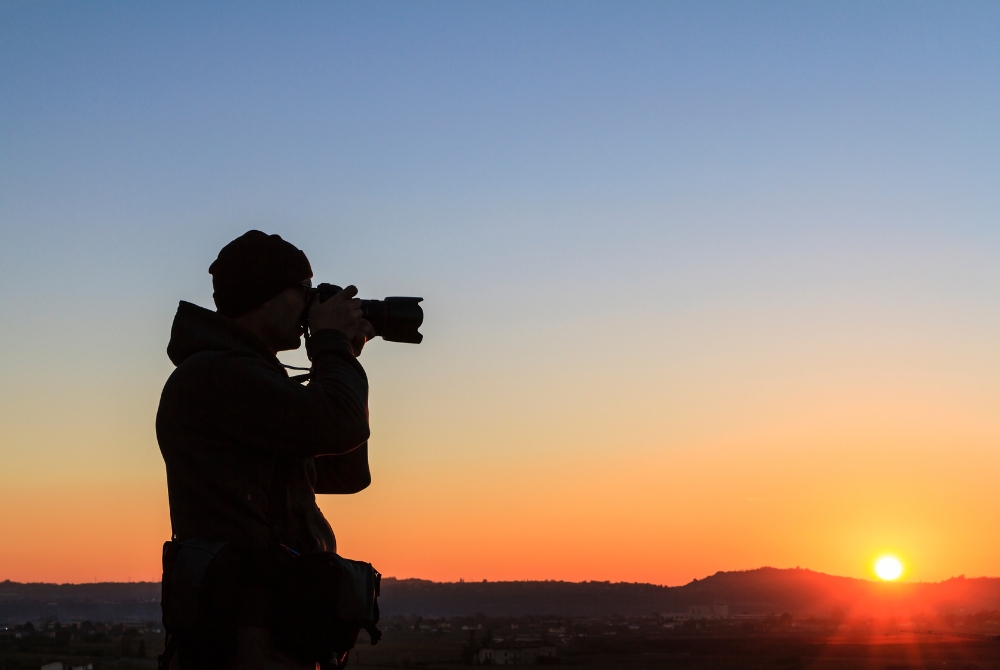At this point, it should come as no surprise that the internet is the Wild West of intellectual property law. Between AI-generated content and complex layers of transmitting other people’s ideas, it can prove difficult to draw the lines of copyright ownership, permissible sharing, and infringement.
We see this situation arise acutely for photographers who share their images on social media in the hope that they will receive attention and gain hired work. The technology of sharing and embedding has created a gray area in which legitimate media outlets are able to show photographers’ work as part of their news stories on social media, without explicitly securing a license for the photos.
Recently, some photographers have banded together to challenge this trend. The most recent chapter of the saga has unfolded in an outcome that is not quite a win… But it is an open door to further appeal.
Hunley & Brauer… and Friends
The photographers leading the case, Alexis Hunley and Matthew Scott Brauer, both took politically salient photographs that were embedded by news media outlets in 2020 and 2016, respectively. The defendant in the case? Instagram.
Hunley and Brauer argue that because they possess copyright ownership of their photos, Instagram is essentially allowing the unlicensed display of their images through the loophole of embedding. A host of photography associations voiced their agreement with the plaintiffs in an amicus brief.
You may be wondering: Why is this allowed in the first place? Has this question been addressed before? The answer to both of these questions can be summed up in one word: precedent.
The Server Test
The current case against Instagram is really trying to challenge a precedent set in an earlier chapter of the internet, the server test. This test arose from a 2007 ruling of the Ninth Circuit Court in Perfect 10 v. Google. In this case, an adult entertainment publisher sued Google for copyright infringement over images appearing in its search engine index.
At the time, seeing how this could wreck the budding functionality of the internet, the Ninth Circuit had to determine how to define infringement in this new frontier. Yes, search engines can display images from across the internet. Is that the same as using the image without the owner’s permission?
To answer this question, the Ninth Circuit decided that copyright infringement would be based on the image’s “location.” In the ethereal internet world, this amounts to where it is digitally stored: if you own the copyright to an image and host that image on your website server, other folks can still share it under fair use if they link back to its original location – that is, if they do not actually possess the image. An analogy that has been used for this: glimpsing a painting through your neighbor’s window. The neighbor can let others see the painting, but, ultimately, they retain control of whether or not the public has access it. In internet terms, if a search engine links to an image on your website, and the image remains hosted there under your ownership and control – then infringement has not occurred.
This ruling has allowed Instagram and other tech giants like Google and Pinterest to display search results and feeds without IP backlash, a foundational function of the internet. And they have reasserted the protection of this server test in their own amicus brief.
In a way, Hunley and Brauer are not arguing against the principle of the server test. When the internet was a simple plain of HTML, it made sense. Now, however, technology offers a far more complicated path from owner to viewer via sharing and embedding.
For example, if Buzzfeed embeds a photo from a photographer’s Instagram, and people who read the article see the photo paired with the headline, how does one distinguish that from using the photo without a license? From the viewpoint of Hunley, Brauer, and other photo organizations, the practical differences start to melt.
The 9th Circuit Challenge
Beyond this pragmatic question, the server test is not unanimously affirmed by other federal circuit courts. The plaintiff’s brief cites seven other courts that have ruled: if you display someone’s work without their permission, it is infringement, no matter how you come to display it or whose server hosts it.
The Ninth Circuit has acted as a sort of clog to the other courts’ decisions, as it covers much of the western and southwestern United States, including creative centers like LA, San Francisco, and Seattle. But the Ninth Circuit also seems open to change – in fact, a Reuters article reported that they almost seemed to be beckoning change.
The most recent decision made by a panel of judges in this circuit sent this message: “We have to go with Instagram for now, because we are bound by precedent, and this is not the right type of trial to overturn precedent. But we are really interested in hearing your arguments if you wanted to appeal for the type of trial that would flip precedent.”
We cannot predict the future, but that certainly sounds like an invitation to the plaintiff to appeal and make a different argument… so that the court can offer a different outcome.
